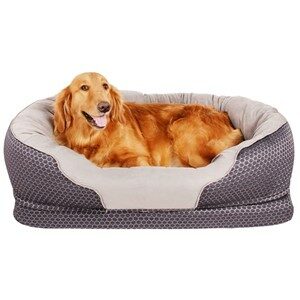A Comprehensive Guide To Dog Adoption
Welcoming Home Your Furry Friend!
Introduction
Adopting a dog is a life-changing decision that brings joy, companionship, and responsibility into your life. A Comprehensive Guide to dog adoption will help. Whether you’re a first-time dog owner or a seasoned pet parent, the process of adopting a dog should be approached thoughtfully and responsibly.
There are a lot of things you will need to do prior to bringing home your furry friend and this guide will assist you all the way.
Keep this in mind, whether you rescue an older dog or a puppy, a lot of dogs tend to follow the 3-3-3 rule when getting acclimated: 3 days of feeling overwhelmed and nervous. 3 weeks of settling in. 3 months of building trust and bonding with you.
This comprehensive guide will walk you through the steps of adopting a dog, from preparation to bringing your new furry friend home and life beyond.
Preparing for Adoption
Before going to the pet adoption location, there are some things you need to do ahead of time. These are mentioned below.
- Assess Your Lifestyle
Before adopting a dog, it’s crucial to assess your lifestyle and determine if you’re ready for the responsibilities that come with dog ownership. Ask yourself:
- Do you have enough time to dedicate to a dog?
- Is your living situation suitable for a dog?
- Can you afford the costs associated with dog ownership, including food, vet care, training, and grooming?
- Choose the Right Breed
Each dog breed has its own unique characteristics, energy levels, and needs. Research breeds to find the one that matches your lifestyle and preferences. Consider factors like size, exercise requirements, and temperament. Keep in mind that mixed-breed dogs can also make wonderful pets.
- Budget for Dog Ownership
Owning a dog does require financial investment beyond the initial adoption fee. Make a budget for ongoing expenses, including food, treats, grooming, vaccinations, and unexpected vet bills. It’s essential to be financially prepared for the long-term commitment of dog ownership. The average age of a dog living is from 10 – 13 years depending upon breed. So, budget accordingly. The average adoption fee varies from $50 – $500 depending upon the state where you live. The average monthly expenses for a dog is: $164.
Breakdown of Estimated Monthly Expenses:
- Food: $10 – $15
- Medications: $30
- Waste Disposal: $30
- *Housing Fees: $10 – $100
- Miscellaneous Costs: $30 – $200
- Preventive Medications Every 6 Months: $130 – $190
- Core Vaccinations Every 3 Years: $90 – $360
- Routine Checkups Annually: $45 – $300
- Boarding Annually: $125 – $250
- Emergencies: Between $1,000 – $2,000
- Dog Toys: $10 – $15
- Dog Bed: $25 – $200
*If you live in associations, they may assess you an extra homeowner’s association fee for the dog.
- Find a Reputable Shelter or Rescue
When shopping for a dog, look for reputable animal shelters or rescue organizations in your area. These organizations provide a safe haven for dogs in need and often have a variety of breeds and ages available for adoption. Check their reviews, visit their facilities, and ensure they follow ethical practices.
- Prepare Your Home
Before bringing your new dog home, make your living space safe and welcoming. Remove any hazards, secure trash cans, and purchase necessary supplies such as food and water bowls, a leash, name tag, crate, and toys. Create a designated space for your dog to eat, sleep, and play. Check out our article on Puppy Proofing Your Home, just click on the link.
The Adoption Process
This step assumes that you have decided on which shelter or rescue center you have chosen for the adoption.
- Visit the Shelter or Rescue Center
Visit the shelter or rescue center you’ve chosen during their visiting hours. Take your time to interact with the dogs available for adoption. This will help you get a sense of their personalities and choose a dog that fits your lifestyle.
- Ask Questions
Do not hesitate to ask the shelter or rescue center staff questions about the dog’s history, health, and behavior. Inquire about vaccinations, spaying/neutering, and any known medical issues. The more information you have, the better you can prepare for your pet.
If you are getting a puppy, ask what their size as an adult dog is. Knowing this information, you can plan on getting the proper dog bed for his size. Ask if the staff knows his sleeping style as this determines which type of dog bed to buy.
- Consider Adoption Fees
Most shelters and rescue centers charge an adoption fee to cover the cost of caring for the dog. These fees can vary widely, so be prepared to budget for them accordingly. Remember that you’re not just buying a pet; you’re contributing to the welfare of other animals in need. The adoption fee ranges from $50 – $500, with the average fee about $300. The average fee will vary from state to state.
- Schedule a Home Visit
Some shelters and recue centers may require a home visit to ensure your living environment is safe and suitable for a dog. Be prepared for this step and make any necessary adjustment to your home based on their recommendations.
- Complete the Adoption Application
Once you’ve found the right dog and passed the home visit, you’ll need to fill out an adoption application. This application helps the shelter or rescue center assess if you’re a suitable match for the dog in question.
- Wait for Approval
The adoption process can take time as shelters and rescue centers review applications and conduct background checks. Be patient during this period and trust the process. It’s all in the best interest of the dog’s welfare.
- Search for a Vet
As you are waiting for approval, you can search out a vet that is in your area. Visit them at their office and discuss with them the breed of dog you are adopting. Also, ask for a list of vaccinations and fees. This will help you make any changes to your budget.
Bringing Your New Dog Home
After getting informed that you will be welcoming home your furry friend, there are somethings you need to do before his arrival. We list them below:
- Prepare for the Arrival
Before bringing your dog home, make sure you have all the necessary supplies ready. This will include food, water, bowls, leash, collar with ID tags, crate or dog bed, treats and toys. Create a comfortable and safe space for your dog in your home. Be sure the area is not in heavy traffic areas of the house or apartment.
- Choose an Adoption Day
Select a day when you have time to spend with your new dog and help them adjust to their new environment. Avoid adopting a dog when you have a busy schedule or significant commitments. Remember dogs tend to follow the 3-3-3 rule when getting acclimated: 3 days of feeling overwhelmed and nervous. 3 weeks of settling in. 3 months of building trust and bonding with you.
- Introduce Your Dog Slowly
When you bring your dog home, introduce them to their new surroundings gradually. Start with one room and expand their access over time. This helps your dog to become comfortable and reduces anxiety.
- Establish a Routine
Dogs thrive on a routine. Set a schedule for deeding, bathroom breaks, training sessions, and exercise. Consistency will help your dog feel secure in their new home.
- Begin Training
Training is essential for your dog’s well-being and your relationship with him. It is also a great way to bond with your pet. Start with basic commands like “sit”, “stay”, and “come.” Positive reinforcement techniques, such as treats and verbal praise, are very effective for teaching good behavior.
Check out our article on how to use Positive Reinforcement in Dog Training by clicking on the link.
Caring for Your Adopted Dog
Once your dog his home, you have to perform some caring activities with your dog. These are mentioned below.
- Health and Veterinary Care
Regular veterinary care is crucial for your dog’s health. Schedule vaccinations, check-ups, and dental cleanings as recommended by your vet. Discuss preventive measures for fleas, ticks, and heartworm.
- Nutrition
Provide your dog with a balanced diet that is appropriate for their age, size, and activity level. Consult your vet for dietary recommendations and monitor their weight to ensure they stay healthy. This can include the type of dog food and treats to buy.
- Exercise and Mental Stimulation
Dogs need both physical exercise and mental stimulation. You can do this by taking daily walks, play fetch, and engage in interactive games. Puzzle toys and treat-dispensing toys can help keep your dog mentally sharp.
- Grooming
Regular grooming is essential to keep your dog healthy and comfortable. Brush their coat, bathing, trim their nails, and clean their ears as needed. Different breeds have varying grooming needs, so research your dog’s specific requirements. You can also ask your vet for assistance on how to do some of the grooming on your dog.
- Socialization
Expose your dog to different people, animals, and environments to ensure they become well-adjusted and sociable pets. Puppy classes and dog parks are excellent ways to facilitate socialization.
- Responsible Ownership
Be a responsible dog owner by obeying local leash laws, cleaning up after your dog, and ensuring they are spayed or neutered. Also, make provisions for your dog’s care in case of emergencies or your absence.
Building a Strong Bond
In this section we will provide information on how you can begin to start bonding with your furry friend.
- Spend Quality Time Together
Building a strong bond with your dog requires spending quality time together. This means you will need to find time to engage in activities your dog enjoys, such as playtime, walks, training sessions and cuddles. This is very important and don’t neglect this. Your pet needs this just as much as you do.
- Be Patient and Understanding
Dogs may exhibit behavioral challenges as they try to adjust to their new home. Be patient, and use positive reinforcement techniques to address any issues. Seek the help of a professional dog trainer or your vet if needed.
- Communicate Effectively
Learn to read your dog’s body language and communicate effectively with them. This understanding will strengthen your bond and help you to respond to their needs and emotions. Remember, your dog cannot talk with you. They will exhibit body language to get your attention.
Conclusion
Adopting a dog is rewarding experience that brings joy, love, and companionship into your life. By following the steps outlined in this comprehensive guide, you can ensure a smooth and successful adoption process.
Remember that responsible dog ownership requires dedication, time, and effort, but the unconditional love and loyalty of your furry friend makes it all worthwhile.
Be sure to take time for his training and daily exercise he needs to keep mentally sharp. Give him some challenging puzzle toys to keep him occupied on days he cannot go outside due to weather conditions.
Welcome your new dog into your family with open arms and a heart full of love, and together, you’ll crate wonderful memories for years to come.
One final tip, when looking for his food, look for the most healthful options and not cheap stuff. Just as humans like to eat healthful food, you must do this for your dog as well. Read the nutrition and ingredients labels carefully before buying.
Related Articles
Below are some articles that may be of interest to you.
- Christmas Presents for My Dog
- How To Train A Puppy
- How To Train Your Dog To Sleep on Their Bed
- When Should A Dog Bed Be Replaced
- Using Alexa for Dog Behaviors
Go back to the Dog Luxury Beds home page.


